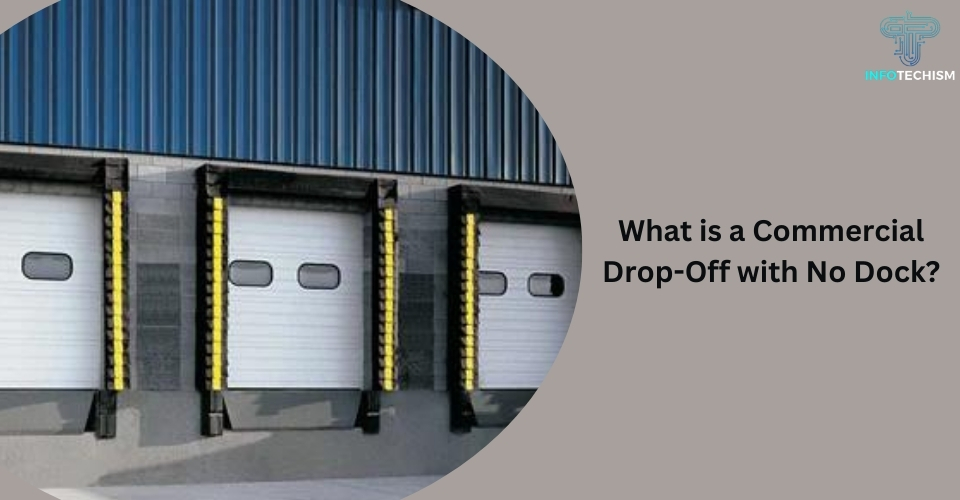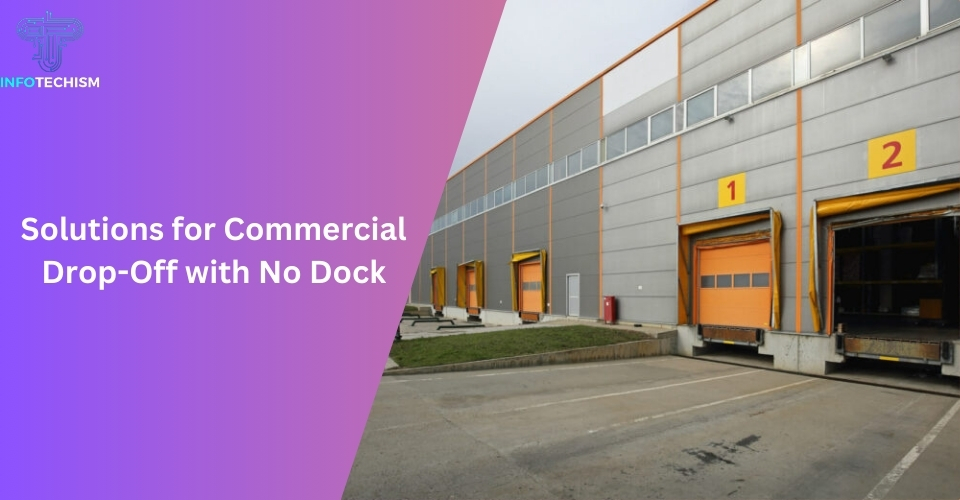With the expansion of e-commerce and worldwide trade, the logistics and transportation business has expanded rapidly, creating a greater demand for efficient delivery systems. Many businesses and transportation providers confront logistical obstacles, like a Commercial Drop-off with No Dock.
Unlike facilities with specialized loading docks, these places lack the infrastructure for efficient loading and unloading of products, complicating the process for drivers, receivers, and shipping companies alike.
This article discusses the nature of commercial drop-offs with no dock, their specific issues, potential solutions, and techniques that businesses and logistics providers can use to ensure timely and secure deliveries. Understanding the complexities of this delivery system allows businesses to better prepare for effective deliveries and reduce disruptions.
What is a Commercial Drop-Off with No Dock?

A commercial drop-off with no dock is the delivery of items to a business or facility without a standard loading dock. A loading dock is an elevated platform that is commonly found in warehouses, retail stores, and industrial locations.
It allows trucks to reverse up and load or unload products at the same height as the truck bed. In contrast, facilities without loading docks lack this infrastructure, requiring goods to be unloaded manually or with the assistance of equipment such as forklifts, ramps, or pallet jacks.
These types of places can range from tiny enterprises, such as individual shopkeepers or service providers, to bigger institutions, such as restaurants, offices, or healthcare facilities, which were not designed for freight transit.
Installing a dock may be impractical for firms operating in older buildings or metropolitan regions with limited space, thus deliveries must be managed differently.
Common Challenges of Commercial Drop-Off with No Dock
The lack of a loading dock creates a number of issues that can impede the delivery process. The following are the most prevalent challenges faced by drivers and businesses:
Manual Unloading Requirements:
Without a dock, truckers frequently have to manually unload cargo, which can be time-consuming and physically taxing. This method may necessitate more individuals to perform the task, increasing the risk of injury.
Increased Delivery Time:
Manually unloading products or using inefficient equipment can drastically increase delivery time. What might normally take a few minutes in a facility with a dock may take an hour or more in a site without one.
Lack of Specialized Equipment:
Locations without docks frequently lack the necessary equipment, such as forklifts, to aid in the unloading operation. This means that drivers may have to provide their own equipment, which can be inconvenient or raise the cost of the delivery.
Difficulties with Heavy or Bulky Shipments:
Delivering heavy or huge things, such as machinery or big amounts of goods, can be especially difficult without a loading dock. Manually lifting these goods is not only inefficient, but it can also cause damage or pose safety risks.
Parking and Access Issues:
Urban regions or older commercial buildings may lack designated parking spots or capacity for large delivery vehicles. Narrow streets, parking limitations, and limited entry points can all hinder the drop-off process.
Safety Concerns:
Manual handling of big objects without adequate infrastructure raises the danger of accidents and injury. Without the high platform of a port, the risk of damage to cargo or injury to persons increases.
Solutions for Commercial Drop-Off with No Dock

While shipping to areas without docks presents problems, businesses and logistics providers can use a variety of techniques and solutions to help operations run more smoothly. Companies that address these issues proactively can reduce disruptions and enhance delivery efficiency.
Liftgate-Equipped Trucks:
One of the most prevalent alternatives for delivery without a dock is to use trucks with liftgates.
A liftgate is a mechanical platform affixed to the back of a truck that can be raised and lowered, allowing drivers to transport items securely from the vehicle to the ground level. This eliminates the need for human lifting and makes it easier to move big or bulky objects.
Portable Ramps:
Portable ramps are another helpful tool for unloading cargo in areas lacking ports. These ramps feature a slanted surface that allows pallet jacks or hand trucks to transport products from the truck to the ground.
While technique requires some manual labor, it dramatically minimizes strain when compared to lifting goods by hand.
Pallet Jacks and Hand Trucks:
Pallet jacks and hand trucks are key instruments for transporting products to regions without docks. These gadgets enable drivers to effortlessly and safely transport pallets or other big things.
While many facilities may not have this equipment available, delivery drivers can bring their own, ensuring they are ready for any eventuality.
Pre-Delivery Communication:
Effective communication between the delivery provider and the receiving firm is essential to preventing delays and issues. Businesses without docks should notify their suppliers and logistical partners in advance so that they can plan accordingly.
This could include ensuring that the necessary equipment is on hand or coordinating workers to assist with the unloading procedure.
On-Site Assistance:
In rare circumstances, firms without docks may require additional staff to assist with the unloading procedure. For smaller firms, this may entail assigning staff members to assist the driver, whereas larger organizations may require outside assistance.
Having an unloading plan in place ahead of time might save time and effort when completing the delivery.
Specialized Freight Services:
Companies who receive deliveries without a dock on a regular basis may benefit from working with specialized freight services that have experience handling these types of drop-offs.
These services frequently include the required gear and experience to guarantee that deliveries are made safely and efficiently, especially in challenging environments.
Conclusion:
Commercial drop-off with no dock provide distinct issues for businesses and logistics providers. From the physical challenges of hand unloading to the logistical complexities of negotiating non-dock delivery sites, these scenarios necessitate careful planning and the proper equipment to be successful.
At last, with the appropriate techniques and technologies in place, commercial drop-offs without docks may be efficiently handled, lowering the likelihood of delays and ensuring that items arrive safely and on time.







